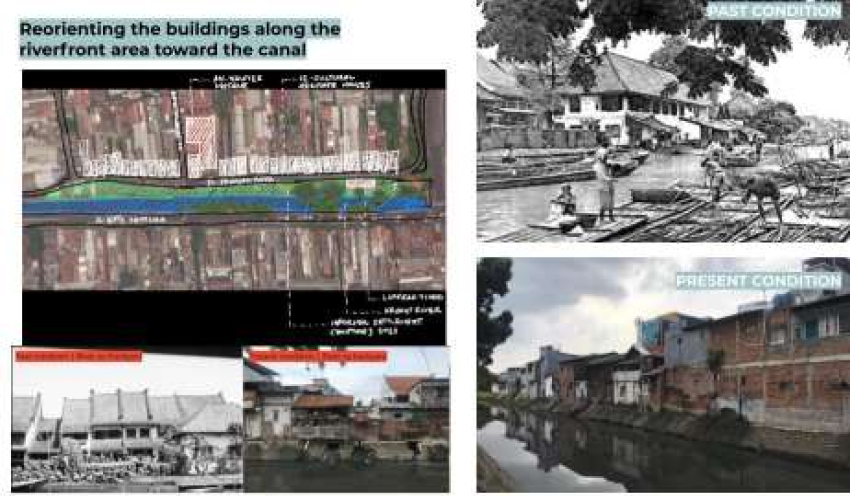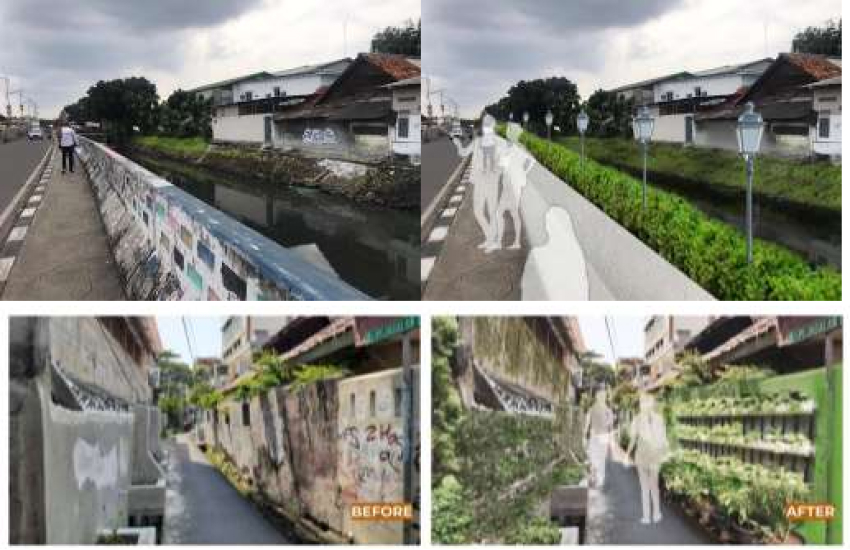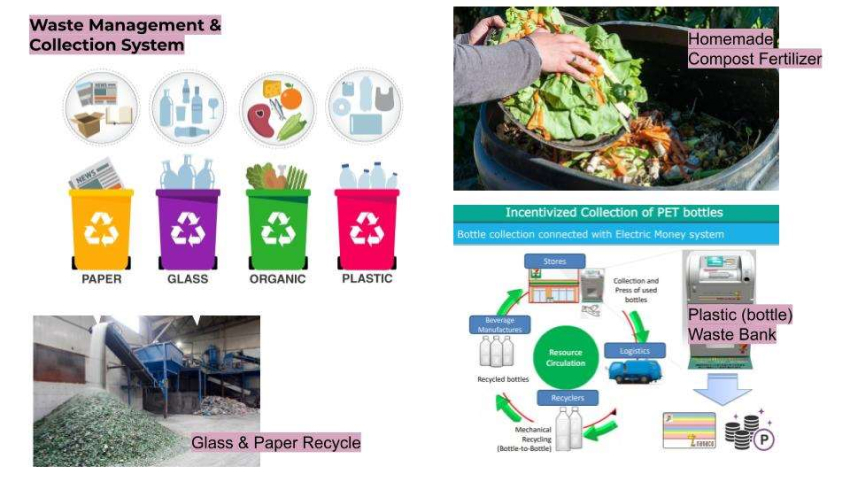Proposing A New Healthy Historic Urban Landscape in Pekojan
Prof.Kemas Ridwan Kurniawan ,
Siti Arfah Annisa / Indonesia
Introduction
Pekojan is one of the historic areas in the city of Jakarta with an enermous historical narratives and traditions
that could be assets to become heritage tourism destination. Even though Pekojan is better known as Arab
Village, more than that historically this area has shown a mixture of Arab, Chinese, and Indigenous cultures
in a cosmopolitan environment. Massive and irregular planning becomes challenge for Pekojan development today. However, with proper strategy, Pekojan has potentials to be developed as heritage tourism destination for wider communities. This proposal is intended as guide for conservation,development, and design of Pekojan in the context for development of tourism and culture in Jakarta based on historical aspects. This project is collaboration between the author as main supervisor and eight master students of Architectural History and Theory Workshop, Department of Architecture, University of Indonesia in collaboration with Regional Research Council of DKI Jakarta. The process is carried out in several steps
starting from analysis of Pekojan through archive studies, observations, and interviews, analysis of
challenges and opportunities, formulating vision and principles for development, and proposing recommendations for development and design. The whole process is carried out by involving various stakeholders such as local governments, community members, non -government organizations, and is supported by the initiators of “HUL Quick Scan Method” from University of Indonesia, Bogor Agricultural University, Trisakti University, RCE Netherlands, and Heritage Hands-on. This workshop resulted in several
development and design programs recommended for Pekojan, including making heritage as catalysts for
development, creating sustainable urban kampung, regaining the use of Krukut Canal, providing the area
with better accessibility, and initiating community-based tourism activities. The results of study led us to
propose a new healthy historic urban landscape in Pekojan. In terms of conservation, it is proposed to
implement adaptive reuse for heritage buildings as visitor center to support tourism in Pekojan. Meanwhile, in terms of developing the urban landscape, it is recommended to rejuvenate the area along Krukut Canal
as main attraction and face of Pekojan, reforest the area, regulate waste management, and improve infrastructures to encourage tourism in a clean and healthy environment of Pekojan.
Conclusion
In this five-week workshop, the author as main supervisor for eight students carried out each of five steps one
by one every week by involving and getting review from the other initiators of HUL Quick Scan and the stakeholders involved. As the final result, this proposal recommended Pekojan as a historic tourism destination with healthy and sustainable concept by integrating Pekojan narrative into daily life experience that can be felt by wider community and creating a strong identity for Pekojan. We proposed Jalan Pekojan Raya as a shopping street for tourists with car-free-based concept to promote Pekojan culinary and specialties. One of the heritage buildings located on this street, namely Langgar Tinggi Mosque, can be used as visitor center by using the space on its first floor area. This position of visitor center which is located between Jalan Pekojan Raya and Krukut Canal can be integrated with the concept of rejuvenating the river area as a new face for Pekojan to create public spaces as attraction for tourists. To support sustainable tourism, it is also proposed reforestation in areas along the canal and alleys in Pekojan to make them healthier, more beautiful and attractive. Responding to cleanliness issue of the canal, the waste management must be integrated by creating waste banks and recycle system. Another interesting thing is the effort to create historical atmoshphere by redesigning the empty walls of abandoned buildings in Pekojan with murals or paintings as memorial for local elders or historical heroes in Pekojan. In addition, improvement of local infrastructure such as sidewalkarrangement, placement of street furnitures, and parking management on narrow streets in Pekojan also needs to be considered to create a comfortable and enjoyable historical tourism experience.
Objectives Aims or Purposes
- 1. To create development and design programs in response to the existing challenges and potentials of
Pekojan.
2. To design spaces that have potential and suitable to boost Pekojan as an attractive heritage tourism
destination.
3. To offer alternative strategies to the stakeholders in creating Pekojan as a clean, healthy, and sustainable
historical tourism area.
Process or Methods
- 1. Analyse the historic urban landsacpe, by investigating the narrative, layout, and typology of Pekojan through archive studies, observations, and interviews.
2. Define challenges and opportunities of development in Pekojan.
3. Formulate vision as the main goal for development and design.
4. Elaborate principles as guide for development and design proposal.
5. Recommending the proposal for conservation, development, and design of Pekojan.
Techniques and materials
This proposal generally proposes implementation of adaptive reuse to heritage buildings in Pekojan to serve
as visitor center for tourism activities, rejuvenating the river area as a clean and attractive space to encourage
public activities and increase popularity of Pekojan, reforestation along side of rivers and alleys in Pekojan,
tidying up the waste management system, improving regional infrastructure for tourism as well as equipping
the streets with informative signage and furnitures to make tourists’ experience more comfortable and enjoyable. This proposal can be applied throughout all Pekojan area. However, area in the southern Pekojan could be intended to be one of the main tourism spots in Pekojan by using Langgar Tinggi Mosque as visitor center, creating Jalan Pekojan Raya as shopping street to sell Pekojan’s specialties and culinary with car-freebased concept in a certain time, and revitalizing Krukut Canal as a new face and healthy public space in Pekojan
Size or Mins.
–



